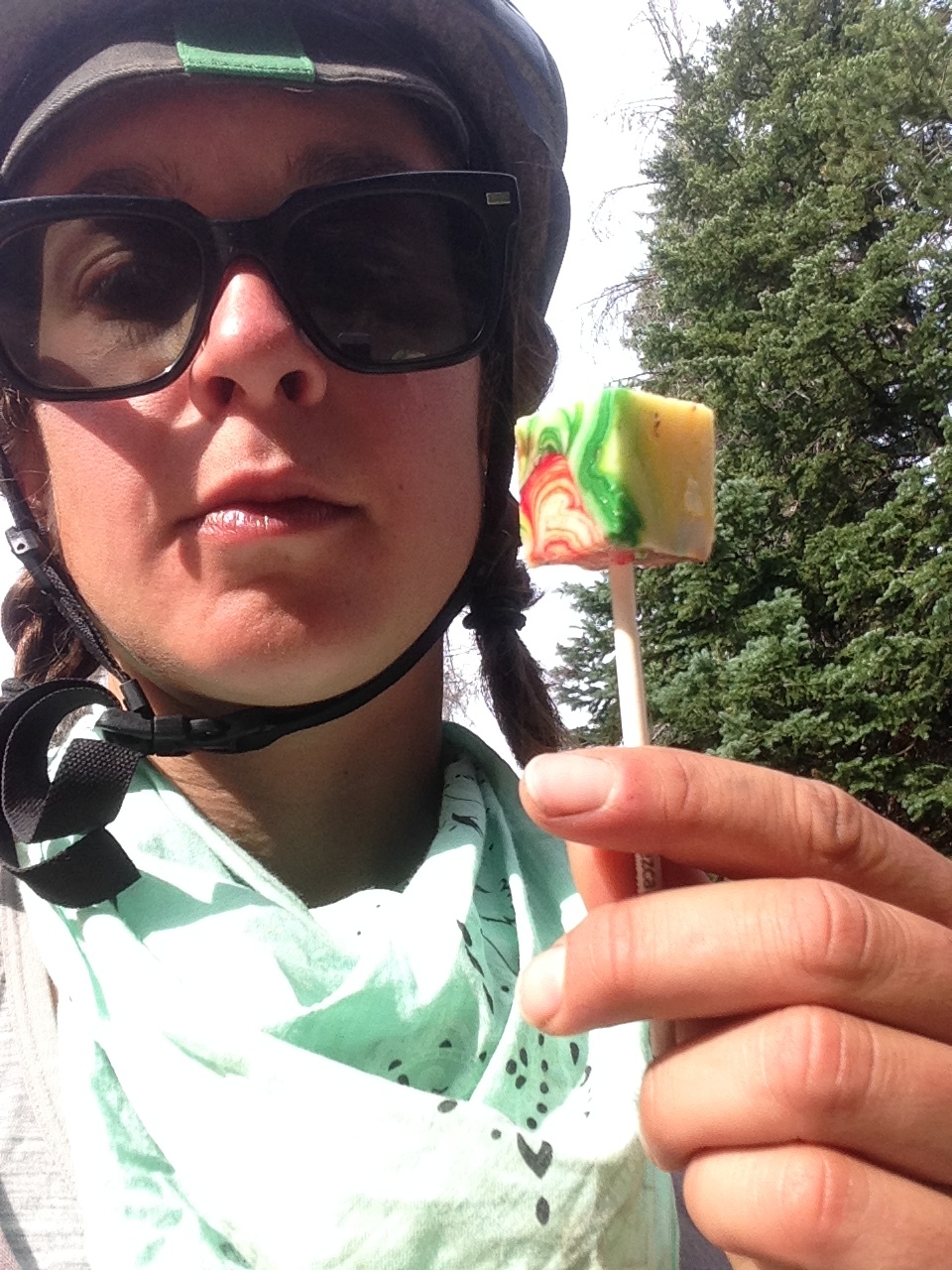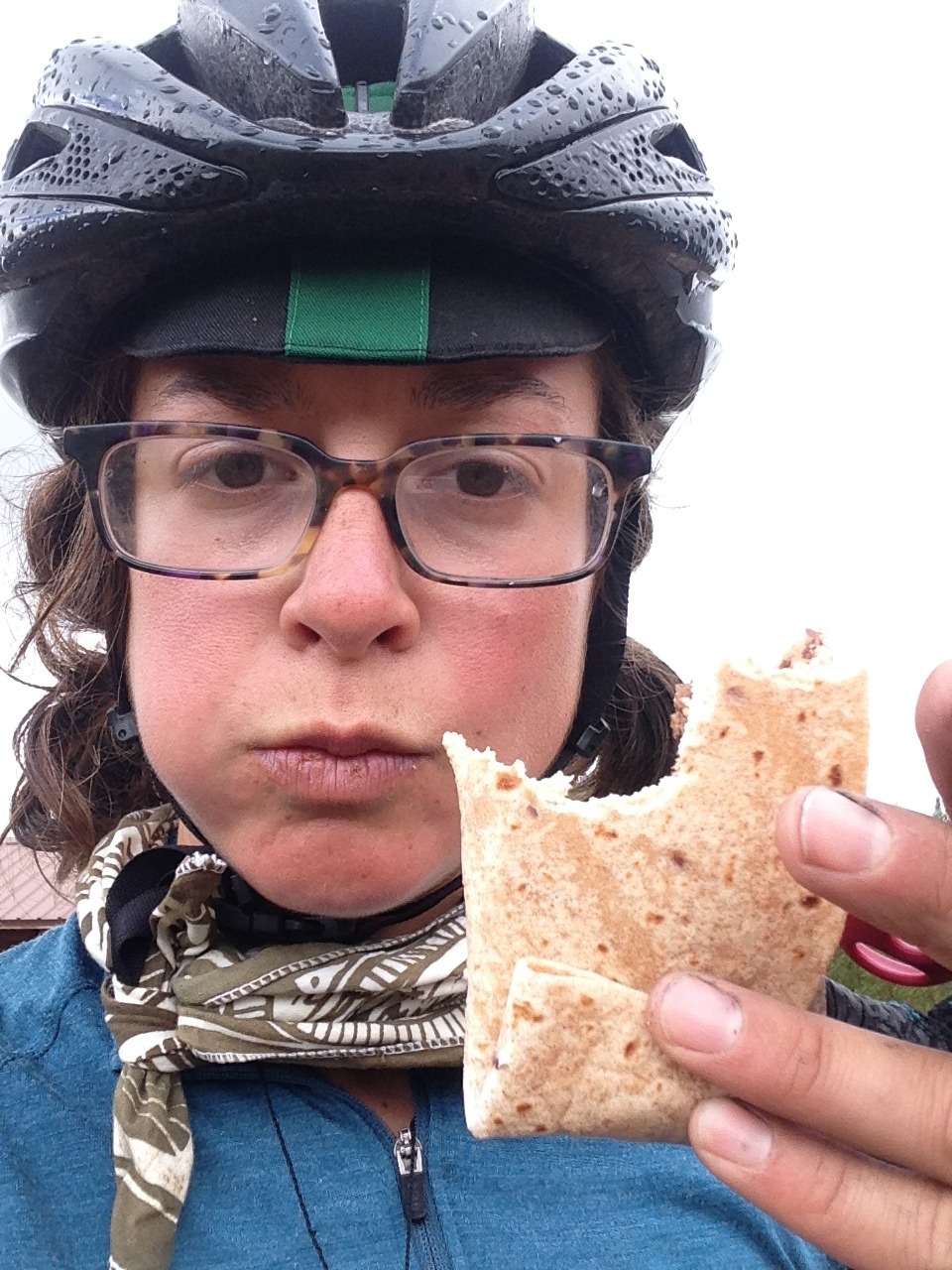What Worked and What Didn't - Nutrition
/We all know everyone's bodies are different, and there a million different diets to which people subscribe. So I'm not going to tell you what I think is the best... wait, I will probably do that. However, it'll be qualitative in nature. I've never been a calorie counter, but I'm hyper aware of what I put in my mouth and how it makes me feel. Here are a few of my food preaches:
I was a vegetarian for 6 years prior to riding the Divide.
Look, there's no small coincidence that my site is called Small Tomatoes. Back in the day, I purchased this domain name because I was all about eating the things that were good for you, but maybe weren't full of sugars, fats, and salts. I was healthy. I was aware. I boycotted processed sugar for a whole summer. I supported local agriculture. But on the divide, this philosophy of eating is a luxury... unless you're a very good planner, and have no soul.
I planned on eating meat, because it's an easy way to get protein, fat, and all the amino acids your body wants on the trail.
The only restaurant/bar in the Wyoming Basin is not going to have quinoa-kale salad dressed with a tahini sauce and hemp seeds. It's just not. So try a buffalo burger.
I also succumbed to eating candy. I felt shitty about it at first, but then gradually accepted it when I realized how much it helped my mind and legs get up dry, dusty, long passes in Montana.
As healthy as you think you are, when you're riding a fully loaded bike for most of the day, you simply need fuel to burn. Most of the time, your legs will keep spinning if you give it enough (either in the form of complex carbohydrates, starches, or simple sugars).
Shout out: there are a lot of people out there saying that endurance athletes can burn fat and don't need to consume lots of sugar.
It's true, but you NEED to train your body to do this. It requires putting out long efforts well below your lactic threshold, and paying very close attention to what you eat. I don't recommend doing this on Day 1 of your tour. You will be VERY VERY cranky.
So don't be afraid to gulp a Snickers bar if you feel like you just need something to keep you going. You should keep going.
If you're paying attention to how you feel when you put something in your mouth, your body will tell you if it wants fats, sugars, protein, or vitamins.
I can't describe this much more than a sort of "elated" or "yucky" feeling after you start eating. To give you an example, I've been super stoked to eat dehydrated broccoli, beef jerky, Swedish Fish, and dry Ramen. The more depleted your body is, the stronger the effect will be. I had a number of occasions on the trip where I put something in my mouth, immediately knew it was the wrong thing, and switched to something different. For the better.
Again, something to file under "Jedi Mind Tricks"
I didn't toss all my morals; I made my own dehydrated veggies, fruits, and jerky before I left.
It was fun! For a month before the trip, I made batches on batches of dehydrated broccoli, asparagus, bell peppers, onions, strawberries, and bananas. I also got into jerky making, which was a blast. The good part about making your own jerky is that you have control over sourcing your meat. Hooray organic and local! For more details, see this post.
Unfortunately, I coupled the dehydrated veggies with couscous at dinnertime. When couscous started to taste like death, veggies were -in my mind- guilty by association. I stopped eating veggies in New Mexico, which was a bad idea.
I basically carried veggies with me the whole way, but stopped eating them. Unless you re-hydrate them in a container during the day, you really need to heat water to get them to soak it up. There was so little water in New Mexico that I didn't feel good about losing some of my precious water to vapor during the cooking process. I should've figured out how to do this better though, because the first time I ate a salad after the trip, my body basically rejected it.
Now that my opinions are out of the way, here's a list of the things that I carried and ate on the trail. Maybe it'll give you a few ideas.
- Granola or rolled oats
- Nut butters - mix n' match when you get tired of peanut butter. Nutella and almond butter are awesome together. Use CDT hiker boxes to find half-empty jars.
- Tortillas
- Couscous, quick cook rice, and quick-cook macaroni - good for dinners
- Hard salami (aka "Meat Stick")
- Cheese - you will end up eating the cheese and meat stick before it goes bad - even in the heat - a harder cheese like a good cheddar or parm-reggiano works better, but others work fine too
- Ramen - I usually ate it dry during the day as a snack when I got tired of sweet carbs
- Bars - Cliff bars are the easiest to find, Pro-bars are much better
- Sesame Seed Sticks - gas stations have 'em, they're a great compliment to raisins
- Raisins and/or Crazins
- Honey - I had honey with me for about half the trip, but gosh it was so messy that I eventually chucked it and got my simple sugars from candy
- Candy - Starbursts, Swedish Fish, Pinwheels, Strawberry Licorice, Snickers, etc.
- Peanut M&M's - they are their own category because they are the best trail food
- Dehydrated Veggies - broccoli, bell peppers, onions, asparagus (<- especially delicious and quick to rehydrate!)
- Jerky - My friend Jeni and I made a few different varieties that included beef, pork and chicken. I think the teriyaki chicken was my favorite.
- Montreal Steak Spice - it just does the trick every time. For anything besides breakfast. Bring it.
Here are a few meal ideas that I found to work well:
- Overnight Oats - Oats pack smaller than granola, and are a nice source of wet food in the morning. Save an empty plastic nut butter jar. Mix 1 part oat to 2 parts water, throw in a spoonful of nut butter, perhaps raisins, and a dash of sweetener if you have it (e.g., honey). Leave it overnight, eat in the morning. Yes, you should put it in your bear bag if you're in bear country.
- Easy Couscous with Veggies - Still have that empty nut butter jar from the morning? Fill it with a cup of water, stick the veggies in about 2 hours before you want to eat dinner. When it's time for dinner, dump the water and veggies in your pot. Bring to a boil. Take off the heat, add 1/2 cup of couscous. Let it stand for 10 mins. Poof! Dinner. Warning: you will need spices, salt, and maybe some fat to make this taste really good.
- Fancy-Pants, One-Pot, High-Calorie, Seafood-Slam - this dish will have your trail pals salivating... the smell of sautéing garlic in the woods is second to none.
- Ingredients:
- Pasta Sides packet, or elbow macaroni
- One head garlic - it's super lightweight and small
- Coconut oil - if you can manage, while you're at a warm showers' or friend's house, get a small container and fill it with coconut oil. Make sure it seals tightly as it will liquidate during the day and solidify at night. Coconut oil is the most calorie dense food per unit of weight. Period.
- Seeds - salted sunflower seeds work well, but any other will work
- Tuna packet - or any other seafood thing you like; sardines are great and don't have the same toxins as tuna, but they don't come in a neat foldable pouch.
- Add a spoonful of coconut oil to your pot, heat slightly
- Cut up 2 cloves of garlic on the lid of your nut butter jar.
- Add to the heated coconut oil; sauté.
- Add the seeds and toast lightly.
- Pour this mixture out into your eating bowl.
- Heat up water.
- Cook your noodles according to the instructions.
- When ready, pour noodles into your coconut oil mix and stir.
- Add some salt and perhaps spice to give it some zing.
- Enjoy your fancy-pants, one-pot, high-calorie dinner!
- Ingredients:
When you're not on the trail eating trail food, enjoy a very large meal in a town. It's the best. Real ice cream is not found often on the GDMBR, but you can always find an ice cream sandwich at a gas station.
I probably ate in a restaurant 2 times per week on average, and up to 2 times per day. (When you're in town, it's hard to not eat at an establishment.)
Alright, that's it from me. The most important thing you need to do is listen to your body. Your standards may fall a little, but perhaps it's okay. There's a time and place for everything. Love yourself.







